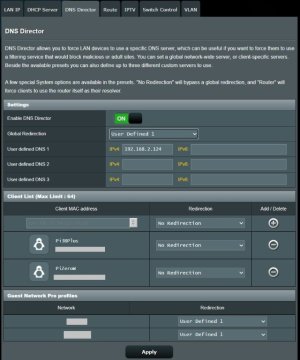GHammer
Very Senior Member
Doesn’t show up at all, or doesn’t show up with a hostname? How does it get its IP? Names that only exist in the Client List aren’t known to dnsmasq so the Pi-Hole can’t retrieve them via a reverse lookup of the IP. You could add a reserved IP on the DHCP tab with a hostname to let dnsmasq respond with your preferred hostname. Or you can just setup the name on the Pi-Hole (I seem to remember there was some kind of configurable client list available).
Has no name, it does of course have the IP.
I suppose I can add all devices as reserved, but if it is only 1 or 2 and I can get their name, no problem.
Adding to Pi-hole is by IP, so for static, works for IPv4, IPv6 is still the address only.
When the router provides the ID, I never see the IPv6 addresses in the Pi-hole just the device name.
Currently I'm quite happy with how it's working.


